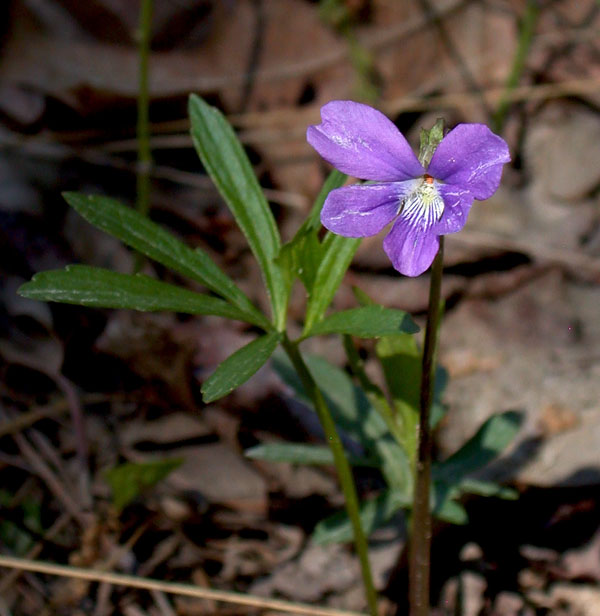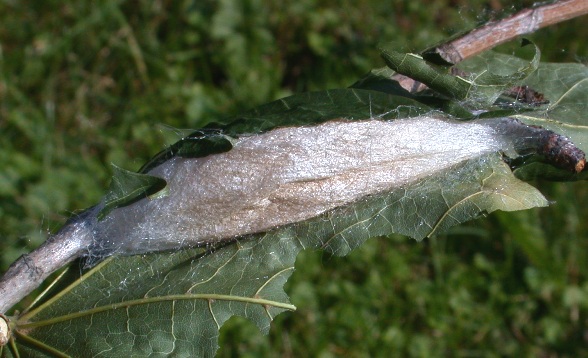Among the stemless blue violets there are several ‘cleft’ violets, so named for their variously lobed leaves. The number of species is not very well understood at this time. I recently observed one of these cleft violets near Albany in limestone woods. It is treated as the Viola subsinuata species complex by some or split into two separate species by others, V. palmata and V. subsinuata. Supposedly V. palmata makes uncleft leaves early in the spring followed by cleft leaves later (i.e. it is heterophyllous), while V. subsinuata only produces cleft leaves (i.e. it is homophyllous). According to this latter definition the plant in this picture would be V. palmata, however I was given a plant from near Ithaca that in my garden is homophyllous but has produced heterophyllous leaves in another person’s garden this year. Both have been called early blue violet, although they don’t flower particularly early relative to the common stemless blue violet V. sororia.

A perhaps more well-defined species is V. brittoniana (Coast Violet) which has deeply cleft leaves and is only known from near the Atlantic Coast. This plant was photographed growing on a sandy roadside in southern NJ a couple days ago.





